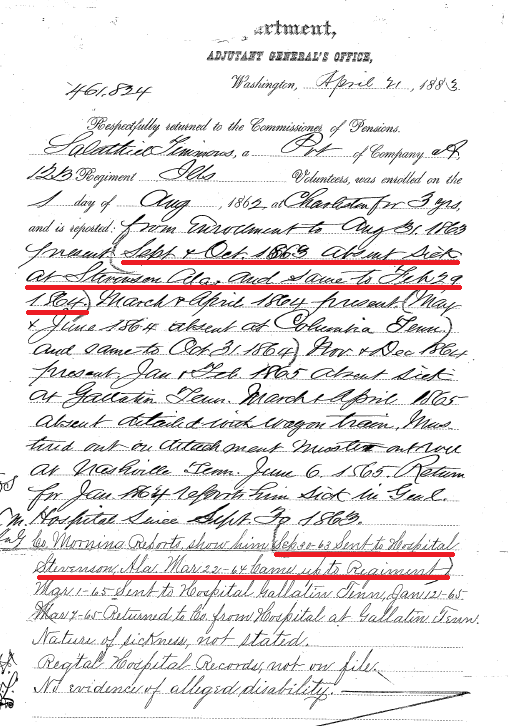The Battle of Chickamauga on September 18-20, 1863 was the largest and most significant battle that Wilder’s Brigade fought. It is generally considered to be a Confederate victory, although losses on both sides were high. It ultimately cost General Rosecrans his job, and he was replaced by one of his subordinates, General George H. Thomas.
It would be silly for me to try and describe the Battle on this blog, so I will refer the reader to the lengthy Wikipedia article that gives a full explanation, including the movements of Wilder’s Brigade. In spite of the overall Union loss, Wilder’s Brigade performed heroically and was commended by General Thomas. The Brigade successfully defended an important bridge and launched key counter-attacks.
Wilder’s Brigade was so effective at Chickamauga that an elaborate battlefield memorial was erected and dedicated in 1899. A detailed description of the dedication ceremony and transcripts of the speeches given on that day are available here. This monument is definitely on my future travel itinerary!

It was during this same month that our Salathiel fell ill with Typhoid Fever. Whether it was before, during or after the Battle of Chickamauga, we don’t exactly know. Salathiel’s son, Charles, wrote this about his father’s illness:
…[he fell] ill and was left for dead when his unit moved into battle. In his unconscious state, he dreamt that he was marching into battle with many soldiers and he saw the flashing of the guns and decided he did not want to go on and he dropped out of line. He then woke up to see his brother over him. He [the brother] had come back to claim his body.
Salathiel’s original pension application stated that the Rheumatism (the illness that caused the disability) was preceded by an attack of Typhoid Fever. The following report from the Adjutant General lists the dates of all of his hospitalizations. The top portion shows the monthly roll call reports and the bottom shows the morning roll call reports. The dates related to his Typhoid Fever illness are underlined in red.

The monthly roll call records show that Salathiel was present in his Company on August 31, 1863 but absent “sick at Stevenson, Alabama” on September 30, 1963 until February 29, 1864 and was back present with his Company again by March, 1864. (There was a General Hospital at Fort Harker at Stevenson, Alabama where General Rosecrans had his headquarters.) The morning roll call shows that he was actually sent to the hospital on September 30, 1863.
Untreated Typhoid Fever was a nasty business. It generally goes through four phases, each lasting about a week. During the first week, a fever sets in along with general malaise, including headache and cough. During the second week, the fever spikes and the patient is so ill he cannot generally even get up. Delirium is common – and is consistent with the description given by Salathiel’s son Charles (above). In the third week, intestinal complications can occur and some of these can be fatal. Other organs can also be affected by septic conditions. If the patient survived the third week, symptoms and fever begin subsiding during the fourth week.
The McManus book talks about how scarce the water supplies were during the Battle of Chickamauga (p. 107) and how the soldiers scavenged for water in dirty creeks and springs. It’s certainly possible that Salathiel contracted the water-borne illness during the battle itself, and was deep into the second-week symptoms by the end of the month when he was transported to the hospital.
He recovered enough from his initial infection that he returned to his Company on March 22, 1864.
